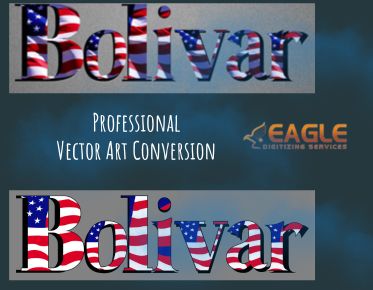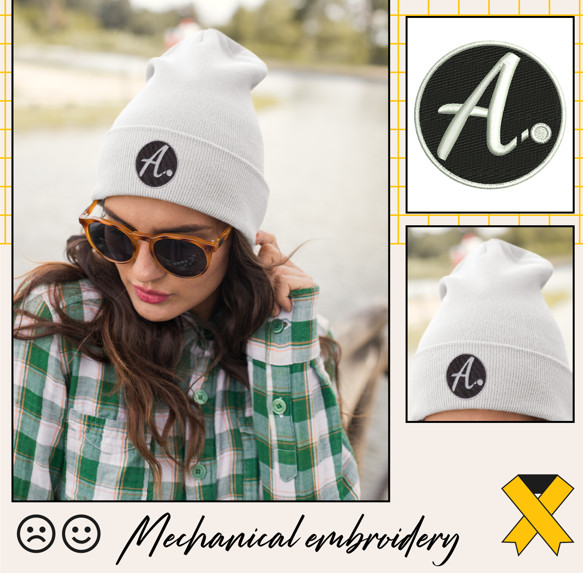Exploring the Versatility of Vectors in Real-World Applications
In a world
dominated by visuals, it’s easy to overlook the silent champions that underpin
much of our graphic design landscape. Vectors—those
precise, scalable graphics—are more than mere digital tools; they are the
backbone of creativity across various fields. From the logos that emblazon our
favorite brands to the intricate designs that adorn our living spaces, vectors
play an indispensable role in shaping our visual experience. Let’s unpack the
significance of vectors and explore their multifaceted applications in today’s
dynamic design environment.
Unpacking Vectors: The Unsung Heroes of Design
Vectors are
mathematical representations of images, crafted from points, lines, and curves.
Unlike raster images that become pixelated when scaled, vectors maintain their
integrity and clarity, no matter the size. This ability to resize without loss
of quality makes vectors particularly valuable for designers who seek
versatility in their work. By allowing for seamless edits and adjustments, vectors empower creators to experiment freely,
unlocking a realm of possibilities that traditional graphics simply cannot
offer.
Why Vectors Matter in Today’s Visual World
In a
visually-driven society, the demand for striking and adaptable graphics has
never been greater. Vectors provide the flexibility and precision needed to
meet this demand. Their scalability ensures that whether a logo is emblazoned
on a billboard or a business card, it retains its sharpness and visual impact.
Moreover, in an era where digital content reigns supreme, the efficiency of
vectors in file size and versatility makes them a preferred choice for
designers, marketers, and brands alike.
Vectors in Branding and Marketing
Building
Brand Identity: The Role of Vectors in Logos
Logos are the
visual cornerstone of a brand, encapsulating its identity and values in a
single image. Vectors are essential in logo design, allowing for crisp, clean
lines that convey professionalism and sophistication. Whether it’s the swoosh
of a sportswear giant or the intricate emblem of a luxury brand, vector logos
maintain their sharpness across various platforms. This consistency helps
reinforce brand recognition and trust, making vectors a vital tool in any
branding arsenal.
Advertising:
How Vectors Enhance Campaign Visuals
In the
competitive arena of advertising, visuals speak volumes. Vector graphics can
elevate campaign aesthetics, providing eye-catching elements that draw
consumers in. From vibrant illustrations to intricate infographics, vectors add
flair and professionalism to advertisements, ensuring they stand out in a
crowded marketplace. The ability to create versatile visuals that can be easily
modified for different formats further enhances their utility in marketing
campaigns.
Packaging
Design: Making Products Pop with Vector Art
Packaging is more
than just a protective shell; it’s a canvas for creativity. Vectors play a
pivotal role in packaging design, enabling brands to create striking visuals
that capture attention on store shelves. The precision of vector graphics
ensures that every detail, from typography to illustrations, is crisp and
clear, enhancing the overall appeal of the product. This meticulous attention
to design can influence purchasing decisions, making vectors an invaluable
asset in product marketing.
The Impact of Vectors in Architecture and Interior Design
Architectural
Plans: Precision and Detail with Vectors
In architecture,
precision is paramount. Vectors facilitate the creation of detailed
architectural plans, allowing architects to depict complex structures with
accuracy. By using vector-based software, architects can produce drawings that
are not only visually appealing but also rich in detail, ensuring that every
line serves a purpose. This meticulous approach fosters collaboration and
clarity throughout the design and construction process.
Interior
Design: Creating Floor Plans and Layouts
Interior
designers rely heavily on vectors to craft functional and aesthetically
pleasing spaces. Vector software allows designers to create detailed floor
plans and layouts that maximize space and enhance flow. With the ability to
easily modify designs, interior designers can experiment with different
configurations, ensuring that every room is optimized for both form and function.
This flexibility is essential in a field where client preferences and spatial
dynamics can frequently change.
Visualizing
Spaces: The Role of Vectors in 3D Modeling
Vectors have
revolutionized the way designers visualize spaces. With advanced vector-based
3D modeling software, architects and interior designers can create realistic
representations of their designs. This not only helps clients envision the
final product but also allows designers to experiment with various materials,
colors, and textures. The result is a more immersive design experience that
elevates the standard of architectural and interior design.
Vectors in Product Design
Prototyping:
How Vectors Aid in Product Development
In product
design, the journey from concept to creation is intricate. Vectors streamline
the prototyping process, allowing designers to create detailed models that can
be tested and refined. By utilizing vector graphics, designers can easily
manipulate shapes and dimensions, ensuring that each prototype meets both
aesthetic and functional criteria. This agility fosters innovation, enabling
designers to iterate quickly and efficiently.
User
Experience: Designing Intuitive Interfaces
Vectors are
integral to crafting user interfaces that are not only visually appealing but
also intuitive. The scalability of vector graphics allows designers to create
clean, crisp icons and buttons that enhance usability. In a world where user
experience is paramount, the clarity and precision of vectors help ensure that
interfaces are both functional and attractive, ultimately leading to greater
user satisfaction.
CAD
Software: The Intersection of Vectors and Engineering
Computer-Aided
Design (CAD) software is a prime example of how vectors intersect with
engineering and product design. By leveraging vector graphics, engineers can
create precise technical drawings and models that serve as blueprints for
production. This fusion of art and science not only streamlines the design process
but also enhances accuracy, reducing the likelihood of costly errors during
manufacturing.
Vectors in Education
Teaching
Tools: Using Vectors for Educational Graphics
Education thrives
on effective communication, and vectors are invaluable in creating engaging
teaching materials. From illustrations to diagrams, vector graphics enhance
educational content, making complex concepts more accessible. Their scalability
ensures that visuals remain sharp, whether displayed on a classroom board or
printed in textbooks, fostering a more interactive learning experience.
Enhancing
Learning Materials with Infographics
Infographics are
a powerful educational tool, combining text and visuals to convey information
succinctly. Vectors play a critical role in designing these graphics, enabling
educators to present data in a visually engaging manner. The clarity and
precision of vector art make it easier for students to grasp intricate
subjects, thereby enhancing overall comprehension and retention.
Engaging
Students: The Visual Appeal of Vector Art
Students are more
likely to engage with visually appealing content. Vectorart, with its vibrant colors and sharp lines, captures attention and
stimulates interest. By integrating vector graphics into educational resources,
educators can create a dynamic learning environment that encourages curiosity
and fosters a love for learning.
Exploring Vectors in Science and Medicine
Scientific
Illustrations: Communicating Complex Ideas
In the realm of
science, clarity is crucial. Vectors are often employed to create detailed
scientific illustrations that communicate complex ideas with precision. These
visuals can simplify intricate processes, making them more understandable for
both professionals and the general public. By translating complex information
into accessible graphics, vectors help bridge the gap between scientific
knowledge and public understanding.
Medical
Diagrams: Clarity and Precision with Vectors
In medicine,
accurate diagrams are essential for effective communication. Vectors facilitate
the creation of medical illustrations that are both informative and precise,
aiding in education and training. From anatomical charts to procedural guides,
vector graphics provide clarity that is critical in a field where precision can
save lives.
Data
Visualization: Turning Data into Accessible Graphics
Data
visualization transforms raw data into meaningful insights. Vectors are
instrumental in this process, enabling the creation of graphs, charts, and maps
that convey information effectively. By using vector graphics, data can be
presented in a way that is not only visually appealing but also easy to
interpret, fostering informed decision-making.
Vectors in Animation and Film
Storyboarding:
The Foundation of Animated Projects
In animation,
storyboarding is a critical step that lays the groundwork for visual
storytelling. Vectors are often used to create detailed storyboards, providing
a clear visual roadmap for animators. The precision and scalability of vectors
allow for easy modifications, ensuring that every scene aligns with the overall
narrative vision.
Character
Design: Crafting Characters with Vectors
Character design
is an art form, and vectors play a vital role in crafting unique and engaging
characters. The clean lines and customizable shapes offered by vector graphics
allow designers to create visually striking characters that resonate with
audiences. This versatility enables animators to bring their creative visions
to life, resulting in memorable and impactful animated productions.
Motion
Graphics: Enhancing Visual Storytelling
Motion graphics
have become an essential aspect of modern storytelling, and vectors are at the
heart of this craft. The ability to create smooth animations with vector
graphics allows for dynamic visual storytelling that captures attention and
engages viewers. Whether in advertisements, films, or social media content, the
integration of vectors enhances the narrative experience, making it more
immersive and impactful.
Sustainability and Vectors
Eco-Friendly
Design Practices Using Vector Graphics
Sustainability is
a pressing concern in today’s design landscape. Vectors offer eco-friendly
design practices by minimizing waste in both digital and print formats. Their
scalability means that designs can be adjusted to fit various formats without
the need for multiple versions, reducing the need for excessive resources.
Reducing
Waste in Print and Production
By utilizing
vector graphics in print and production, designers can significantly reduce
waste. The ability to create high-quality prints from vector files ensures that
materials are used efficiently, cutting down on excess. This conscious approach
not only benefits the environment but also enhances the overall efficiency of
the design process.
How
Vectors Support Sustainable Branding
Sustainable
branding is becoming increasingly important for consumers. Vectors can
contribute to eco-friendly branding efforts by enabling designers to create
versatile, scalable graphics that align with a brand's commitment to
sustainability. This alignment fosters consumer trust and loyalty, as brands
are seen as responsible stewards of the environment.
The realm of vectors is vast and full of potential. From branding to architecture, animation education, the applications of vector graphics are limitless. Their versatility, precision, and scalability make them an essential tool for designers across disciplines. Embracing vectors opens doors to innovation, creativity, and sustainability in design.



